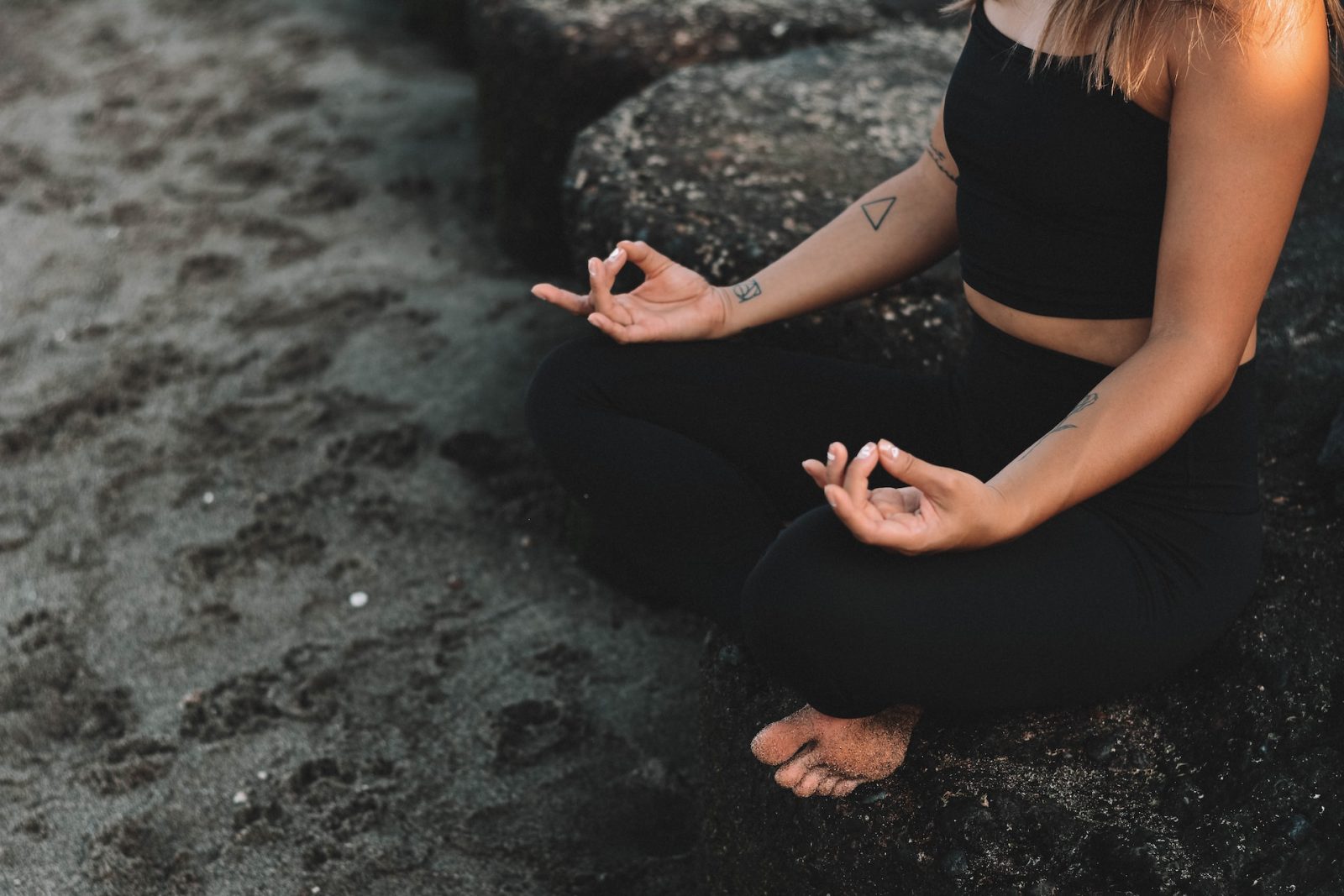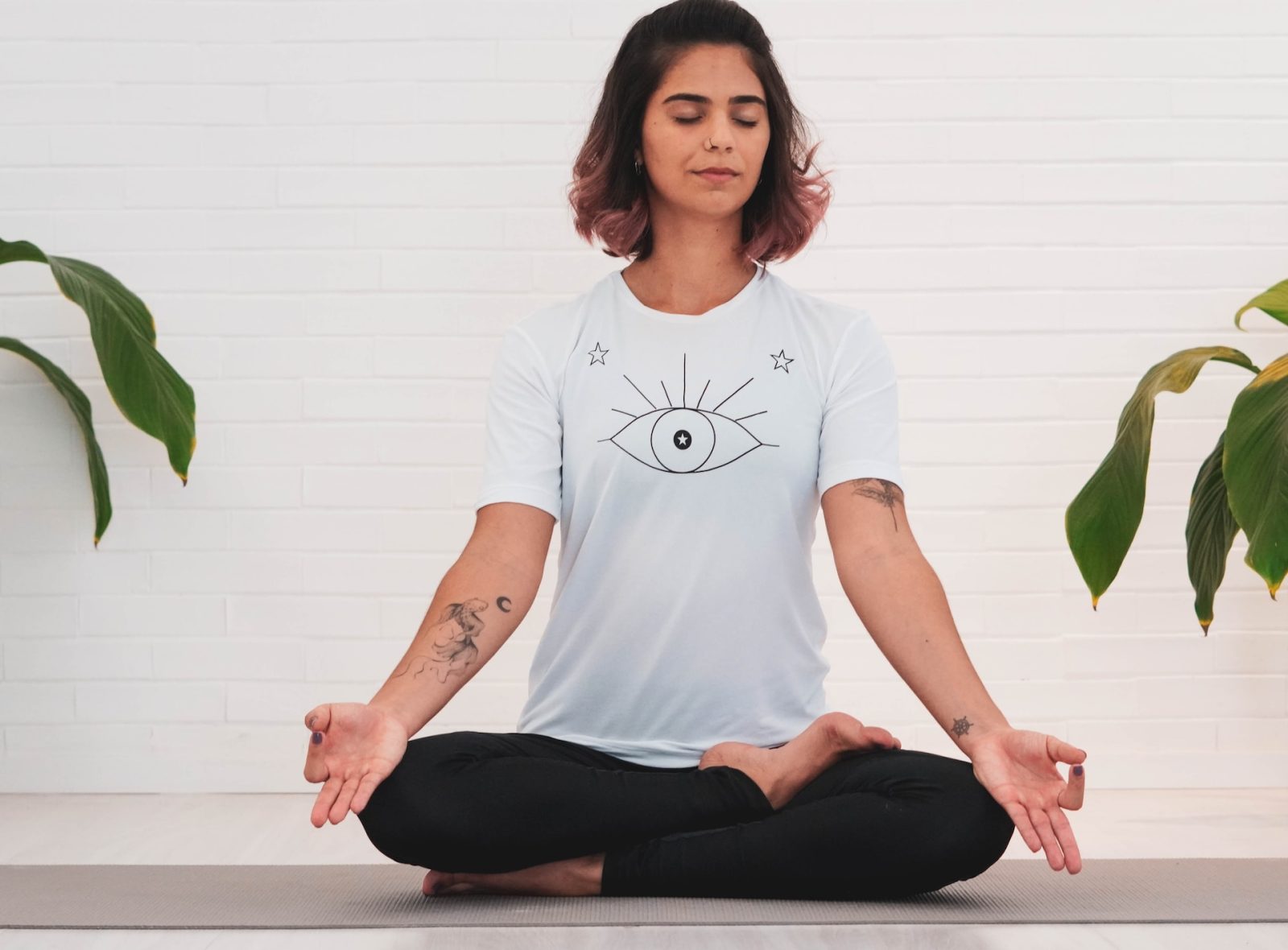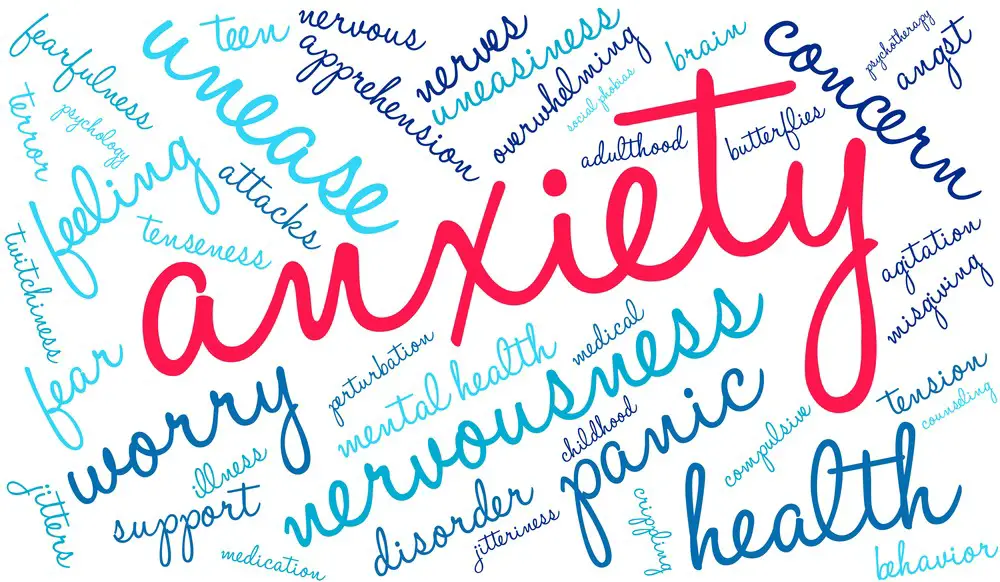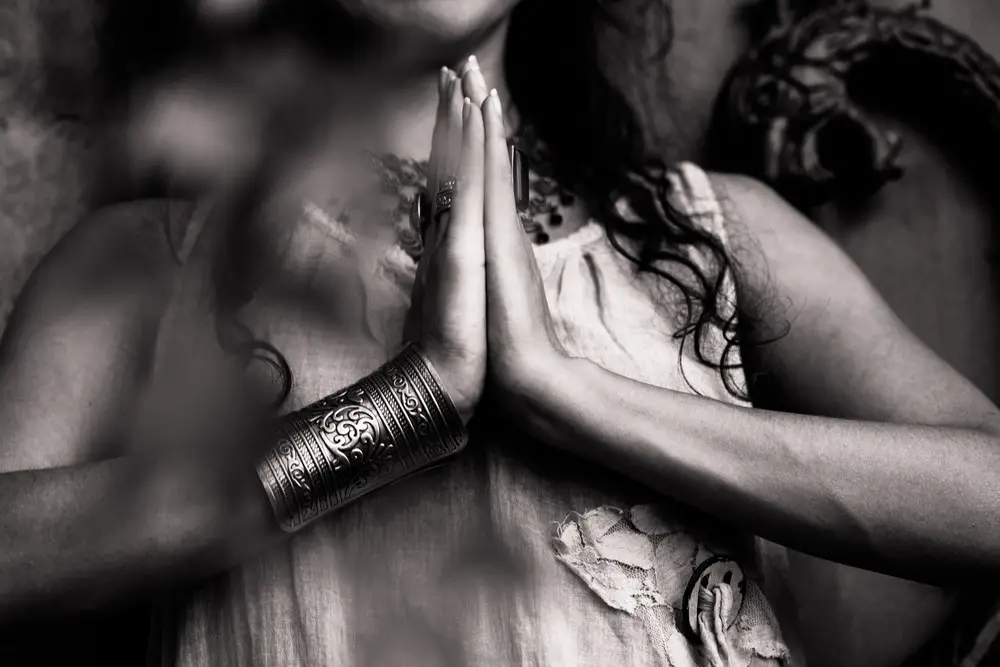As a BetterHelp affiliate, we receive compensation from BetterHelp if you purchase products or services through the links provided
Mudras, symbolic hand gestures used in various spiritual practices, have been known to provide relief to those experiencing anxiety and stress. Originating from ancient Indian traditions, these non-intrusive techniques are believed to have the potential to restore balance and harmony within an individual’s mind and body.
As more people seek natural and drug-free remedies to alleviate their anxiety, mudras have become appealing. When incorporated into daily routines, meditation, or pranayama (breath control practices), mudras can help reduce anxiety and enhance overall mental well-being.
Key Takeaways
- Mudras are symbolic hand gestures utilized for relieving anxiety and restoring balance.
- Incorporating mudras into daily life can improve mental well-being without using drugs.
- Mudras can be integrated with meditation and breath control practices for enhanced effectiveness.

Understanding Anxiety
Anxiety is a pervasive mental health issue affecting millions of people worldwide. It manifests as feelings of nervousness, agitation, and persistent worry. Stress, fear, and external factors often contribute to the development and persistence of anxiety.
Individuals with anxiety may experience panic attacks, which are sudden episodes of intense fear and discomfort. During a panic attack, a person’s heart may race, and they may feel short of breath or dizzy. This can be a frightening experience, often leaving the individual feeling even more anxious later on.
Anxiety can also manifest in hyperactive and impulsive behaviors, making it difficult for people to remain calm and focused. Consequently, their mood may be affected, and it becomes challenging to find relief from the endless stream of anxious thoughts and feelings.
Mudra, an ancient practice involving specific hand gestures, has been found to reduce anxiety and promote relaxation. By incorporating mudra techniques into daily life, individuals can work towards finding a sense of calm and managing their anxious thoughts more effectively.
What are Mudras
Mudras are symbolic hand gestures used in various spiritual practices, including yoga and meditation. These gestures are believed to have a powerful influence on the body and mind, as they help channel energy flow in specific ways. By practicing mudras, it is said that individuals can alleviate various ailments, including anxiety.
Yoga mudras, also known as hasta mudras, are a type of hand mudra that combines hand postures with yogic breathing techniques. These hand gestures are a vital component of traditional yoga, and their practice aims to promote mental and physical well-being. They are based on the belief that each finger elementally corresponds to a specific energy channel, enabling mudras to impact the body’s energy flow profoundly.
Hand mudras can be performed anytime and anywhere, adding versatility and accessibility to their practice. Although they often accompany yoga poses or meditation sessions, these gestures can also be used independently throughout the day to bring about inner peace and balance, making them particularly useful for addressing stress and anxiety.
One position their fingers and hands in specific configurations to practice mudras while focusing on deep and mindful breathing. Each mudra has its unique combination of finger positions, corresponding to the desired effect on the body’s energy channels. By regularly engaging in mudra practice, individuals can experience a wide range of benefits, such as reduced anxiety levels and improved mental clarity.
In summary, mudras are powerful hand gestures that play a significant role in yoga and meditation practices. Hasta mudras, a specific type of hand mudra, involve particular finger arrangements and breathing techniques to influence the body’s energy channels and promote physical and emotional well-being.

The Science of Mudras
Mudras are ancient hand gestures that originated in India and are used to promote mental, emotional, and physical well-being. They involve positioning fingers and thumbs in specific ways to manipulate the flow of energy, or “chi” (also known as “prana”), throughout the body. The principles behind mudras are based on the belief that a subtle energy system runs through the body and connects with various energy centers and channels.
Fingers are significant in mudras, associated with different elements and energy channels. For example, the thumb represents the fire element and is connected to the solar plexus energy center. Similarly, other fingers represent different elements, such as earth, air, ether, and water, and have their respective connections to specific energy centers and channels.
When fingers and thumbs form a mudra, they help redirect the flow of energy within the body, allowing for balanced energy distribution and promoting an optimal state of well-being. When energy is balanced, it can alleviate anxiety and enhance overall emotional stability.
Energy flow is essential to maintaining a harmonious connection between the body and mind. In mudra practice, this energy flow is managed by creating contact points between fingers, forming closed circuits to maintain a continuous energy movement. Redirecting and balancing the energy flow have been believed to have various benefits, such as reducing stress and anxiety, promoting inner peace, and increasing concentration levels.
While the scientific understanding of mudras may be limited, several studies have demonstrated the potential effects of these hand gestures on mental and emotional states. Research suggests that mudra practice can positively impact mood, stress reduction, and anxiety alleviation. Further research is needed to determine the specific mechanisms behind these effects and to confirm the extent of their role in managing anxiety.
In conclusion, mudras connect physical, mental, and emotional well-being by manipulating the body’s energy flow. Through these hand gestures, practitioners can achieve balance in their energy centers and channels, reducing anxiety and improving overall wellness.

Mudras for Anxiety
Mudras, an integral part of yoga practice, are hand gestures that can significantly help reduce anxiety. They work by balancing the body’s energy flow and promoting relaxation. Here are some effective mudras that can be practiced to alleviate anxiety:
Gyan Mudra: This widely practiced mudra enhances mental concentration and relieves stress. To perform Gyan Mudra, touch the tip of the index finger with the tip of the thumb while keeping the other three fingers straight.
Vayu Mudra: Vayu Mudra is known to regulate the air element within the body and reduce restlessness. To perform this mudra, bend the index finger to touch the base of the thumb and gently press it over it.
Chin Mudra: Like Gyan Mudra, Chin Mudra is performed with palms facing upwards, promoting openness and receptivity. It aids in relaxation and stress reduction.
Kalesvara Mudra: Known to calm the mind and support emotional balance, Kalesvara Mudra is performed by placing the middle finger’s tips together and interlocking the remaining fingers while keeping the thumbs extended.
Uttarabodhi Mudra: This mudra is believed to help release tension, promote positive energy, and support mental clarity. Surrounded by the other fingers, the index fingers remain pressed against each other while the thumbs are crossed at the base.
Apan Vayu Mudra: Commonly called the “heart mudra,” Apan Vayu Mudra helps release negative emotions that may lead to anxiety. The tips of the index finger, middle finger, and thumb are pressed together, while the ring finger touches the base of the thumb.
Agni Shakti Mudra: Symbolizing fire, Agni Shakti Mudra aids in dispelling anxiety and lifting the mood. The ring fingers are crossed over each other and tucked into the palms while the other fingers remain interlocked.
Chinmaya Mudra: Chinmaya Mudra’s gentle hand pose helps foster relaxation and introspection. The thumb and index fingertips touch, while the other fingers are folded into the palm.
Mritsanjeevani Mudra: Known to help in rejuvenating the body and mind, Mritsanjeevani Mudra is performed by placing the ring finger at the base of the thumb and gently pressing it with the thumb, with the remaining fingers extended.
Anjali Mudra: Often seen in traditional yoga, Anjali Mudra is performed by pressing the palms and fingers together, bringing serenity and calmness to the mind and body.
Regularly practicing these mudras can help alleviate anxiety and promote relaxation and well-being. It is essential to consult with a yoga practitioner or therapist for guidance on the proper technique and duration to ensure the most effective results.
How to Perform Mudras
Mudras can be an effective way to manage anxiety. These hand gestures help balance energy in the body and have the potential to alleviate emotional stress. To experience the full benefits, it’s essential to perform mudras correctly. Here is a guide on how to execute these ancient techniques.
To begin, find a comfortable sitting position. This can be on the floor or in a chair, whichever supports proper posture. Maintaining the appropriate asana, or body posture, is crucial for ensuring the efficiency of mudras.
While seated, gently place the hands on your knees or thighs, palms facing upward. Pay close attention to the placement of your fingers and thumb, as they are vital in forming the mudras. Each finger corresponds to a specific element and energy, working together to create balance within the body.
Here are some common mudras known to help with anxiety:
Apan Vayu Mudra: The thumb touches both the middle finger and ring finger, while the index finger bends to touch the base of the thumb. The little finger extends straight out. This mudra is often called the “lifesaver” mudra, as it supports the body’s healing process and can relieve anxiety.
Gyan Mudra: The thumb and index finger form a circle, lightly touching each other. The remaining fingers extend comfortably. Also known as the “seal of knowledge,” this mudra stimulates the mind, promotes concentration, and reduces anxiety.
Shuni Mudra: The thumb gently presses against the middle finger while the other fingers extend straight. This “seal of patience” aids focus and mental clarity, helping to process emotions and alleviate anxiety.
Prana Mudra: Touch the tip of the thumb to the tips of the ring finger and little finger, keeping the other two fingers straight. This “energy seal” enhances vitality, supports the immune system, and improves overall well-being, promoting relaxation and reducing anxiety.
Remember, patience and consistency are key when practicing mudras. Incorporating these hand gestures into a daily routine can help cultivate inner peace, reduce anxiety, and create a balanced mind.
Benefits of Using Mudras
Mudras have been known to offer several benefits for individuals experiencing anxiety. One can create a sense of calm and peace by incorporating specific hand gestures or body positions. These gestures help channel energy into the body and balance emotions and thoughts.
Practicing mudras regularly can relieve anxiety and bring about a sense of serenity. Their calming effects impact the nervous system, allowing the body to release accumulated tension. Moreover, the practice of mudras can enhance concentration and mental alertness. This improved focus allows individuals to be more present and tackle anxious thoughts effectively.
In addition to promoting mental calmness, mudras help boost self-confidence. As people gain a better understanding and control of their thoughts and emotions, they experience a sense of healing and increased self-esteem. This newfound courage and compassion are essential when dealing with everyday stressors.
Mudras also contribute to the overall well-being of an individual, offering a safe space for introspection and self-awareness. As people become more mindful of their thoughts and feelings, they learn to cope with anxiety healthily.
Mudras in Meditation and Pranayama
Mudras, or hand gestures, play an essential role in meditation and pranayama, helping individuals achieve a receptive state and connect with their inner selves. Incorporating mudras into meditation practices can enhance awareness and develop a stronger connection with their higher self.
During meditation, mudras help channel the energy flow, enabling practitioners to achieve a more profound sense of calmness and inner balance. In pranayama or breath control, mudras aid in controlling the flow of prana, or life force, throughout the body. Individuals can manage anxiety and stress by combining mudras with specific breathing techniques.
For instance, incorporating Gyan Mudra, which involves connecting the tips of the thumb and index finger, can improve focus and concentration during meditation. This gesture symbolizes the union of individual and universal consciousness, further aiding in self-realization and inner tranquility.
On the other hand, Anjali Mudra, or the prayer gesture, helps facilitate the flow of prana during pranayama practices. By placing the palms together at the heart center, practitioners can redirect the energy flow and create equilibrium, fostering inner peace and relaxation.
Moreover, incorporating mudras into meditation and pranayama practices allows practitioners to understand themselves and their emotions better. When combined with proper breathing techniques and a focused mindset, mudras help create the ideal conditions for self-reflection and transformation.
In conclusion, mudras serve as vital tools within meditation and pranayama, assisting in cultivating a receptive state and fostering a deeper connection with one’s inner self. By combining these hand gestures with appropriate breathing techniques, individuals can effectively manage anxiety and improve overall mental well-being.
Connecting Mudras and Chakras
Mudras, the ancient practice of hand gestures, are believed to help balance various chakras or energy centers in the body. While primarily a practice in yoga and meditation, mudras can relieve anxiety and stress by unlocking the flow of energy within the body.
One of the fundamental chakras in the human body is the root chakra. Located at the base of the spine, the root chakra is associated with feelings of safety, grounding, and stability. Balancing this chakra can aid in relieving anxiety by fostering a sense of security. Certain mudras, such as the Muladhara mudra, specifically target the root chakra and promote its stability.
Chakras serve as the energy centers that interact with one another to maintain overall well-being. Each of the seven main chakras is associated with specific emotional, physical, and spiritual health areas. By practicing mudras related to the various chakras, an individual can encourage positive energy flow and bring balance to these centers.
For instance, the Anjali mudra or prayer pose stimulates energy flow through the heart chakra, enhancing self-acceptance and compassion. Similarly, the Gyan mudra, which involves connecting the thumb and index finger, targets the third-eye chakra, aiding in concentration and focus.
Mudras act as a means to connect with and balance the chakras, allowing for a more harmonious state within the body. By practicing such gestures consistently and mindfully, individuals may experience reduced anxiety and improved emotional and physical well-being.
Mudras and Mental Health
Mudras are ancient healing techniques that use hand positions to manage energy flow in the body. They have been used for centuries to help individuals cope with mental health issues such as anxiety, stress, and depression. These hand gestures are believed to impact the nervous system, promoting balance and relief from emotional challenges.
Practicing mudras can help calm the mind and redirect negative energy. With regular practice, individuals may experience reduced anxiety and stress levels. For instance, one widely practiced mudra, the Gyan Mudra, is believed to ease stress and increase concentration. To perform this mudra, connect the thumb and index fingertips while extending the other three fingers.
Mudras are often combined with other techniques like meditation, deep breathing, and visualizations to enhance their effects. Practitioners believe systematically incorporating mudras into daily routines can lead to a healthier mindset and emotional outlook.
While mudras are not considered a cure for mental health disorders, they can be an effective complementary therapy. They are non-invasive, simple to practice, and easily incorporated into daily life without adverse side effects. This makes them an appealing coping mechanism for many who seek relief from anxiety, stress, and depression.
In summary, mudras offer potential benefits for mental health by promoting relaxation, reducing anxiety, and aiding in stress management. They can be combined with other techniques, such as meditation and breathing exercises, for enhanced effects. Though not a stand-alone treatment for mental health conditions, they are a helpful adjunct in achieving emotional wellness.
Frequently Asked Questions
What are the top mudras for relieving stress?
Some top mudras for relieving stress include Ksepana Mudra, Vayu Mudra, Chin Mudra, Adi Mudra, and Prana Mudra. These mudras help reduce anxiety and tension and promote mental well-being.
How does Ksepana Mudra help with anxiety?
Ksepana Mudra helps with anxiety by directing negative energy out of the body. In this mudra, the middle, ring, and little fingers are interlocked, the index fingers are extended and joined, and the thumbs are placed against each other. Individuals may notice decreased anxiety levels by performing Ksepana Mudra for 5-15 minutes daily.
Can Vayu Mudra alleviate tension and nervousness?
Yes, Vayu Mudra is known to alleviate tension and nervousness. This mudra is performed by pressing the index finger against the base of the thumb while the other fingers are gently extended. Vayu Mudra helps balance air elements in the body, which can reduce anxiety symptoms.
How does Chin Mudra promote calmness?
Chin Mudra promotes calmness by balancing the mind and body’s energies. The index finger and thumb form a circle in this mudra, while the other fingers are extended. Sitting in a comfortable position and practicing Chin Mudra for 15 minutes daily can help promote a sense of calmness and relaxation.
What are the benefits of Adi Mudra for mental well-being?
Adi Mudra is beneficial for mental well-being as it helps to activate the parasympathetic nervous system, which is responsible for the relaxation response. By performing Adi Mudra, individuals may experience reduced anxiety, enhanced concentration, and improved mental clarity.
How does Prana Mudra aid in reducing anxiety?
Prana Mudra aids in reducing anxiety by regulating the flow of prana or life energy in the body. The ring and little fingers are pressed against the thumb in this mudra while the other fingers are extended. Practicing Prana Mudra daily can help balance energy levels, reduce anxiety, and enhance overall well-being.
- Breaking the Silence: Why Men’s Mental Health Matters More Than Ever - April 15, 2025
- How to Transform a Home’s Patio Space into a Relaxing Space - March 23, 2025
- 5 Strategies to Use a Cell Phone to Help Manage Your Stress - March 23, 2025
This site contains affiliate links to products. We will receive a commission for purchases made through these links.



